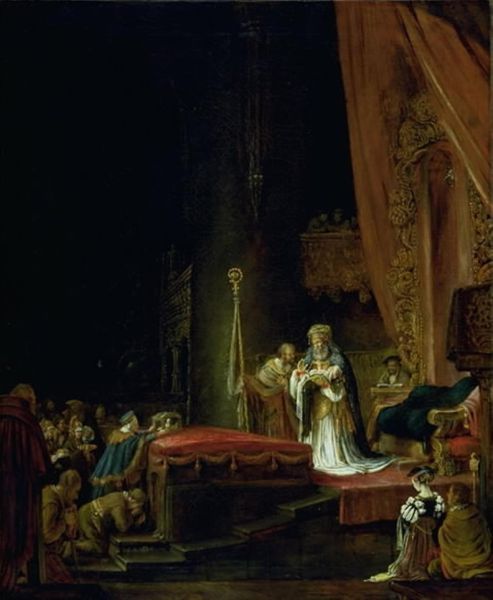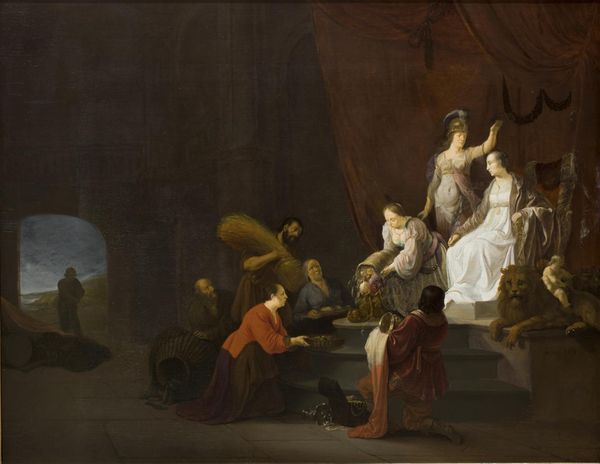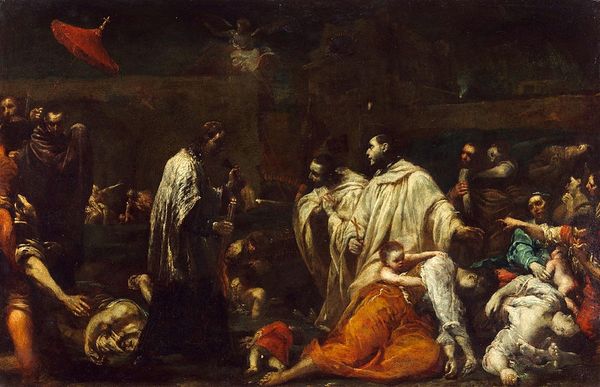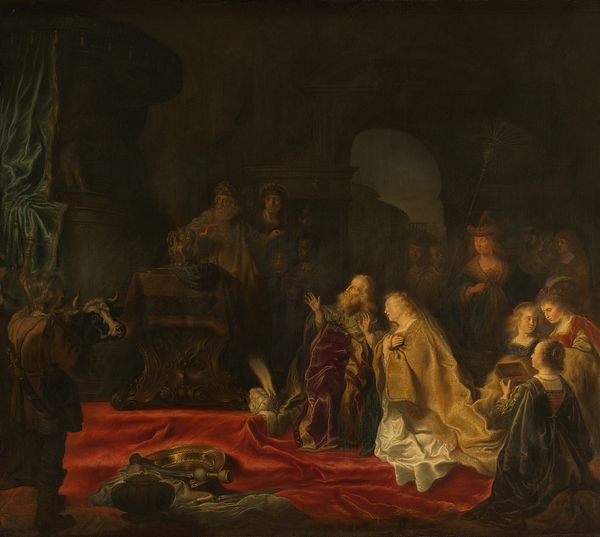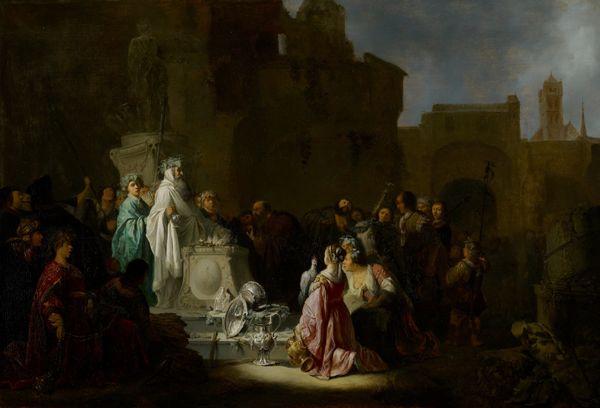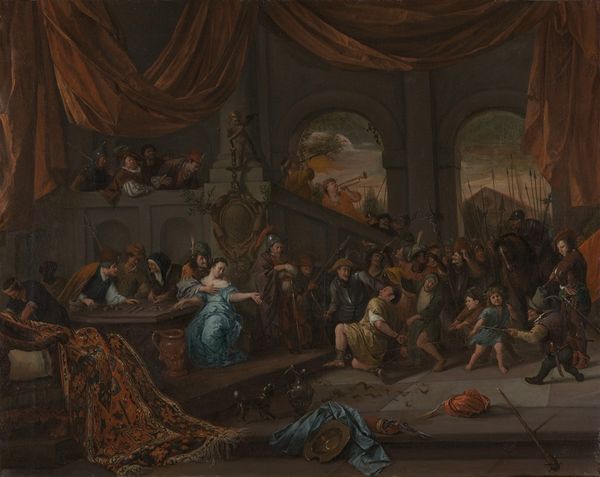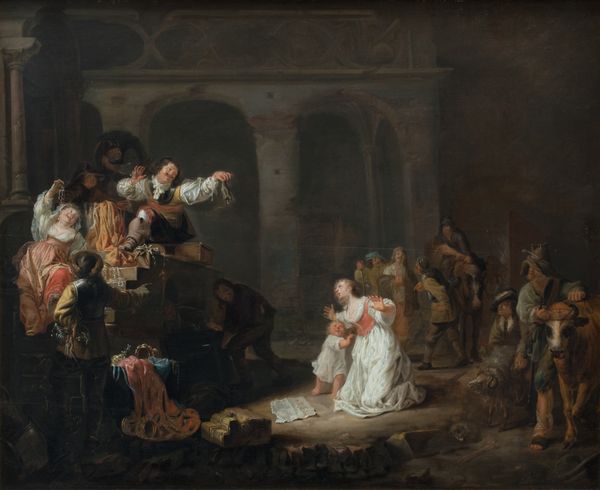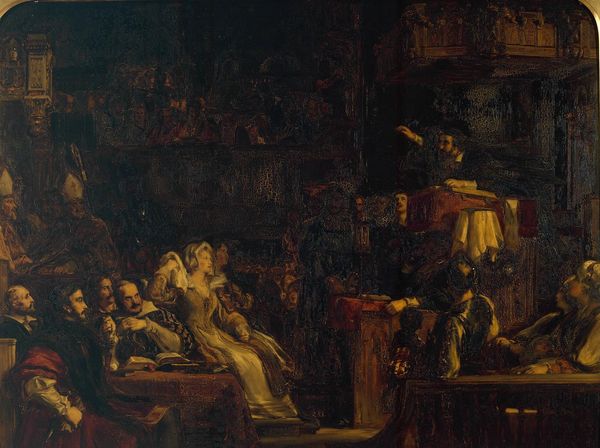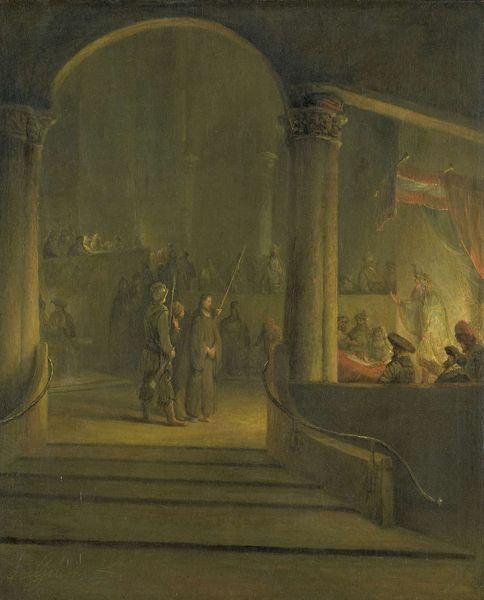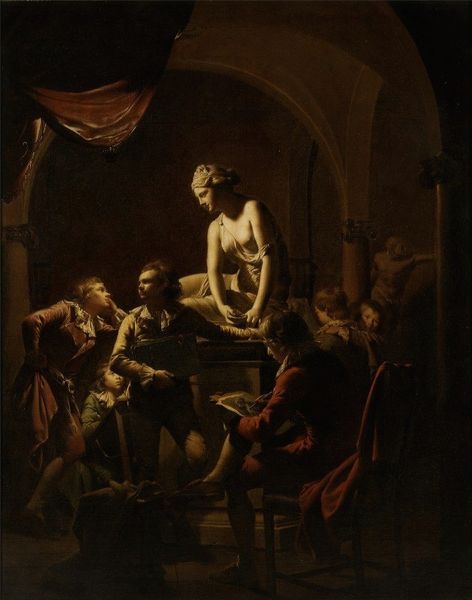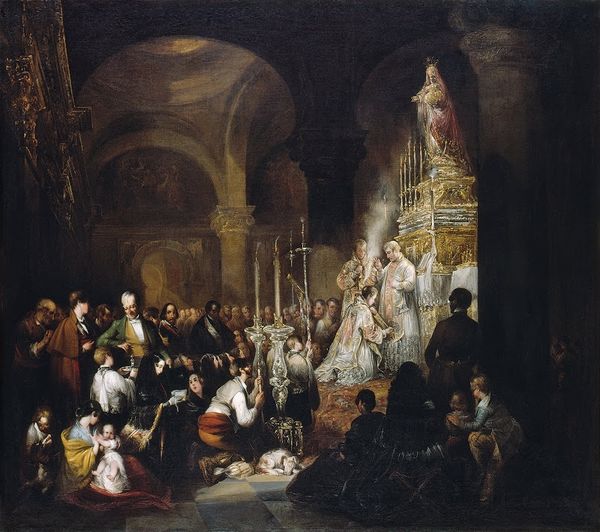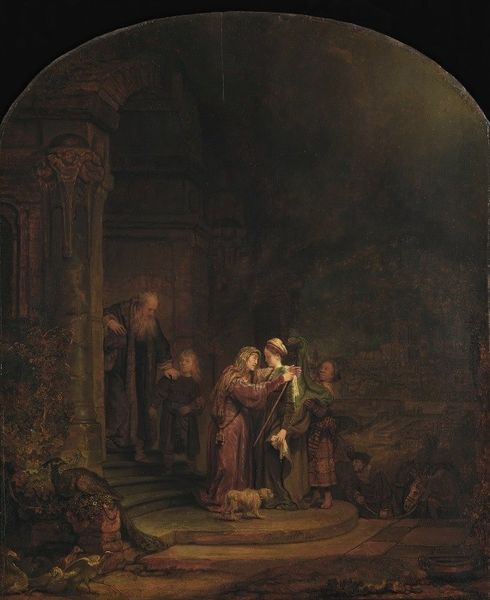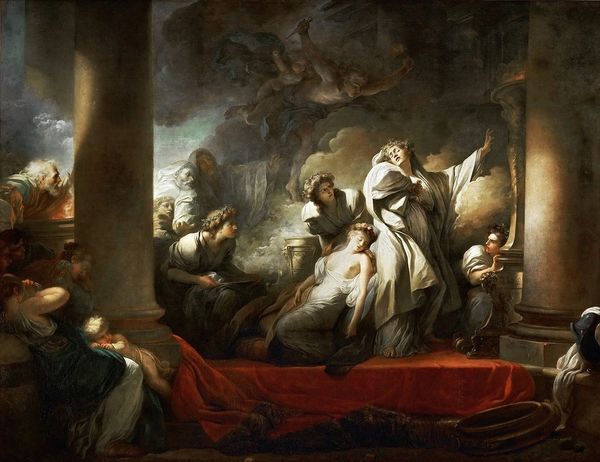
painting, oil-paint
#
narrative-art
#
baroque
#
dutch-golden-age
#
painting
#
oil-paint
#
figuration
Copyright: Public Domain: Artvee
Editor: This is Rembrandt van Rijn's "Simeon's Song of Praise," painted in 1631 using oil paint. I'm immediately drawn to how the light focuses everything on the figures in the center, it almost glows. What do you see in this piece? Curator: The dramatic light is classic Rembrandt, isn’t it? But consider where that light originates: it doesn't just illuminate, it sanctifies. Observe the story of Simeon, holding the infant Jesus; in Luke's Gospel, he recognizes the child as the Messiah. See how Rembrandt uses the dimness around them? It is not merely a compositional tool; it’s symbolic of the world before Christ's revelation, before the light breaks through. Editor: So, the darkness represents ignorance, and the light represents enlightenment through Christ? Curator: Precisely. And consider Simeon himself. Note his aged face, his reverent pose. He embodies the Old Covenant recognizing the New. The arrangement, that almost theatrical spotlight, focuses on recognition. Rembrandt visually orchestrates a moment heavy with spiritual significance, transforming paint into something approaching sacred. Editor: That makes me see the background figures differently. They're not just bystanders but witnesses to a pivotal moment. Curator: They're a vital part of it. Rembrandt uses them to amplify the drama. They symbolize the anticipation, the awe, and the quiet understanding permeating the scene. The whole image becomes a vessel carrying deep cultural and spiritual meaning. Editor: Wow, I hadn't thought of it that way. It's so much more than just a biblical scene. It’s about the weight of prophecy fulfilled. Thanks for your insights. Curator: My pleasure. Art reveals deeper layers when we explore beyond the surface. I learned things myself!
Comments
No comments
Be the first to comment and join the conversation on the ultimate creative platform.

